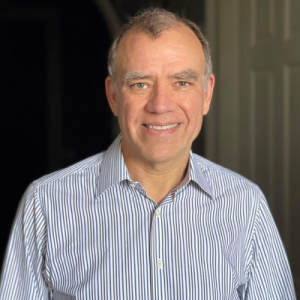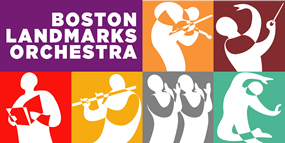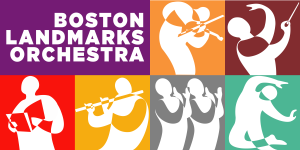On any given night, you’re likely to see young dancers at Landmarks concerts moving to the music. They’ll dance wherever the spirit moves them: on the lawn, along the walkways, or in front of the stage. Their motion becomes more directed when they enter the Maestro Zone, where tonight they will receive conducting lessons from Sheila del Bosque, multi-award-wining flutist, composer, and conductor. Originally from Cuba, she recently graduated from the Berklee College of Music, with a dual degree in Performance and Film Scoring, and a minor in Orchestral Conducting.
Dance Night has become an annual Landmarks tradition. It amplifies the natural move-to-the-music inclinations of our audience. But it also provides an opportunity to showcase the depth of talent that runs through Boston’s diverse cultural communities. In recent seasons, dance collaborations have represented traditions from Haiti, Cuba, Puerto Rico, Colombia, Dominican Republic, Mexico, Venezuela, West Africa, Ireland, Armenia, Syria, and Korea.
Hector Berlioz stitched his Roman Carnival Overture together using two themes composed in 1837 for Benvenuto Cellini. In his Mémoirs, he wrote about the disastrous premiere of that opera: “I had been greatly struck by certain episodes in the life of Benvenuto Cellini. I had the misfortune to believe they would make an interesting and dramatic subject for an opera.” The overture’s opening flourish contains the seeds of the work’s second main theme, which arrives later with the carnival music. The first theme—introduced by the English horn—comes from a love duet between the opera’s artist-protagonist Benvenuto Cellini and the woman he loves, Teresa. Violas repeat the tune, then the full orchestra, with invigorating accompaniment in the trumpets and percussion. A sweetly sung cadence in the strings runs into a swirling gust, stirred up by woodwinds and percussion. Suddenly, we’re swept off our feet and into an Italian street scene—already in progress—amid the exuberant chaos of a Roman carnival.
Richard Wagner was not the first to associate the propulsive energy of Beethoven’s Seventh Symphony with music for dance, but he gave the work its most memorable description:
The Symphony is the Apotheosis of the Dance itself: it is Dance in its highest aspect, the loftiest deed of bodily motion, incorporated into an ideal mold of tone.”
Compact rhythmic cells are ubiquitous in the Seventh Symphony. Each of the four movements has at least one characteristic rhythmic “motto,” accounting for the symphony’s constantly throbbing energy. The opening gestures of the symphony form a grand portal: the full orchestra drives in posts—powerful, widely spaced chords—while the winds create long spans of singing lines between them. The Vivace main section emerges with Haydnesque humor. Strings and woodwinds toss an ever-shrinking motive back and forth, until the woodwinds finally take a rhythmic kernel and run with it. From then on, that kernel is a constant presence. There is no second theme in the first movement—a rare case. But Beethoven’s inventions are so varied that the necessary contrast is already built in. By tradition, the second movement of a classical symphony is broadly paced. But in the Seventh, the tempo indication is Allegretto—on the moving side of moderate—urging the performers to keep the energy up. This second movement has been a favorite with the public since the work’s premiere in 1813. The third movement is a scherzo; the tempo indication is Presto—the fastest of all common tempo indications for Beethoven. The scherzo explodes with good-natured energy. Its athleticism is balanced by a singing trio that is often compared to a pilgrims’ chorus. The finale—Allegro con brio—is a thrilling, obsessively rhythmic romp, not so different from a Roman carnival.
Two summers ago, on this stage, Chyrstyn Mariah Fentroy made time stand still, with an arresting interpretation of “The Swan” from Camille Saint-Saëns The Carnival of the Animals. At the time, she was a Soloist in Boston Ballet. Today, she is a star of the company, having become a Principal Dancer in 2022. She writes:
As artists, we are responsible for articulating the ineffable. Through movement and remaining present, we remind ourselves and our audiences what it is like to feel—to be alive.
Tonight, she articulates the ineffable in Aurora’s Act III Variation—known as the Wedding Variation—from Boston Ballet’s signature production of The Sleeping Beauty, as adapted from the original choreography by Marius Petipa.
For the past few seasons, it has been our honor to partner with the professional dancers of JAE, Jean Appolon Expressions. In choosing repertoire for our collaborations, Founder and Director Jean Appolon has twice selected Haitian folk songs, music associated with singer-actress Toto Bissainthe. In 2019, we performed Paka Loko in an orchestration by Gonzalo Grau. Tonight, we premiere a new arrangement of the folk song Dey. It is a moving tribute to—and lament for—Haitian society, culture, and community. The arresting orchestration is by a longtime Landmarks collaborator, composer David Kempers.
 CHRISTOPHER WILKINS was appointed Music Director of the Boston Landmarks Orchestra in the spring of 2011. Since then, he has expanded the orchestra’s mission of making great music accessible to the whole community. He has also helped develop the orchestra’s Breaking Down Barriers initiative, making accessibility a priority in all aspects of the orchestra’s activities.
CHRISTOPHER WILKINS was appointed Music Director of the Boston Landmarks Orchestra in the spring of 2011. Since then, he has expanded the orchestra’s mission of making great music accessible to the whole community. He has also helped develop the orchestra’s Breaking Down Barriers initiative, making accessibility a priority in all aspects of the orchestra’s activities.





